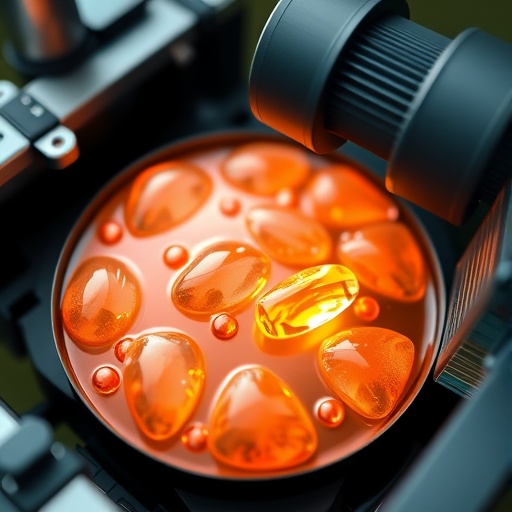Furanolides, a structurally diverse class of natural products, have long fascinated scientists due to their potent and varied biological activities. Members of this intriguing chemical family exhibit a remarkable range of effects, from antibacterial properties to the ability to kill algae or even human cells. These attributes position furanolides as a promising foundation for the development of innovative therapeutic agents. However, one significant obstacle has hampered detailed study: their natural occurrence is limited to trace amounts produced by cyanobacteria, myxobacteria, and certain marine animals such as ascidians, making in-depth analysis and application a considerable challenge.
Historically, efforts to synthesize furanolides artificially have been marred by low yields and high costs. The complexity of traditional chemical synthesis routes has hindered large-scale production, restricting research and potential drug development. Responding to this, a pioneering research team led by Tobias Gulder and Rolf Müller at the Helmholtz Institute for Pharmaceutical Research Saarland (HIPS) have developed an innovative chemo-enzymatic platform that promises to transform furanolide production. This approach harnesses the efficiency and specificity of enzymes to build furanolide molecules from simple precursors, circumventing complicated chemical syntheses.
Central to this breakthrough are two enzymes, CybE and CybF, which the team had previously characterized in a landmark 2022 study elucidating the biosynthesis of precyanobacterin—a seminal member of the furanolide family. By leveraging these enzymes in vitro, the researchers have been able to catalyze the assembly of the furanolide core structure from a variety of simple, chemically accessible precursor molecules. This strategy not only increases production scale but also opens avenues for structural diversification, as modified starting materials can be systematically tested for compatibility with CybE and CybF.
Through meticulous experimentation, the team identified dozens of precursor molecules that were efficiently processed by the enzyme duo, vastly expanding the portfolio of synthetically accessible furanolide derivatives. Combining these precursors in novel ways led to the creation of an unprecedented substance library containing 385 unique furanolide compounds—most of which are newly described entities within this chemical class. This compound diversity is critical for exploring structure-activity relationships and for screening purposes, allowing researchers to pinpoint which molecular variations elicit desirable biological effects.
Given the expense traditionally associated with producing natural products on a scale sufficient for biological assays, the research group devoted considerable effort to optimizing the precursor supply system to drive down costs. This successful cost reduction enabled the production of quantities adequate for comprehensive bioactivity investigations, marking a critical step from mere chemical synthesis to real-world pharmacological evaluation. Such scalability promises to expedite the drug discovery pipeline for compounds derived from natural product scaffolds.
To assess the therapeutic potential of their chemo-enzymatic library, the researchers selected seventeen structurally representative furanolide derivatives for biological characterization. Their testing focused on evaluating both antimicrobial efficacy against bacterial pathogens and anticancer activity against various human cancer cell lines. Remarkably, all tested furanolides demonstrated cytotoxicity against human cancer cells, with some compounds outperforming currently approved clinical drugs. This potent activity against cancer underscores the relevance of furanolides in oncology.
Particularly striking was the ability of several furanolide variants to eradicate cancer stem cells—an aggressive subpopulation often implicated in tumor recurrence and resistance to therapy. Targeting these resilient cells remains a foremost challenge in cancer treatment, and furanolide derivatives may represent a novel class of agents capable of improving patient outcomes by overcoming this hurdle. Further chemical optimization informed by structure-activity data may enhance this therapeutic promise.
Beyond oncology, some furanolide compounds displayed significant antibacterial activity, particularly against Gram-positive bacteria such as Staphylococcus aureus. Given the worldwide surge in antibiotic resistance, the discovery of new antimicrobial scaffolds is urgent. The antimicrobial mechanism of furanolides and their efficacy spectrum warrant further exploration, potentially contributing to a new wave of antibiotics that can tackle resistant infections with unique modes of action.
The research efforts at the Helmholtz Institute for Pharmaceutical Research Saarland (HIPS), in partnership with the Helmholtz Centre for Infection Research (HZI), exemplify the confluence of natural product biochemistry, enzymology, and medicinal chemistry. Their chemo-enzymatic synthesis platform leverages enzymatic precision to expand chemical space and biological testing capabilities, thereby accelerating the path from molecule generation to functional exploitation. This synergy exemplifies the future of drug discovery where biological catalysts unlock access to complex molecules unattainable through pure chemical means.
Looking forward, the team at HIPS is intensively utilizing insights from the structure-activity relationship studies to refine the molecular architecture of these furanolide derivatives. The goal is to maximize therapeutic indices while mitigating potential toxicities. By marrying enzyme engineering, synthetic chemistry, and rigorous biological evaluation, the researchers hope to identify lead compounds suited for further development as candidates for treating infectious diseases and cancer.
This work not only bolsters our understanding of furanolide biosynthesis but also highlights the transformative potential of chemo-enzymatic platforms in natural product research. By overcoming the scarcity and synthetic complexity issues historically associated with furanolides, the study paves the way for future explorations into this versatile class of molecules. The capacity to generate wide-ranging derivative libraries in economically viable ways revolutionizes drug discovery pipelines centered on nature-derived compounds.
Furthermore, the comprehensive biological screening conducted, particularly the robust cytotoxicity assays against both cancer cells and pathogenic bacteria, illustrates the multifaceted utility of furanolides as pharmacophores. The adaptability of these compounds to both anti-infective and anticancer roles underscores their broad applicability in biomedical science.
Ultimately, this research emphasis aligns seamlessly with the mission of the Helmholtz Centre for Infection Research, which seeks novel anti-infective agents and innovative therapeutic approaches. The fusion of fundamental enzymology with applied pharmaceutical biotechnology marks a decisive step toward translating natural product diversity into clinically relevant medicines. As this platform technology matures, it promises to enrich the drug discovery landscape with potent new candidates derived from furanolides.
Subject of Research: Cells
Article Title: A Chemo-Enzymatic Platform for Furanolide Synthesis and Functional Exploration
News Publication Date: 15-Aug-2025
Web References: DOI: 10.1021/jacs.5c08354
Keywords: Drug research, Antibiotic activity, Antiviral activity, Bioactive compounds, Drug candidates




